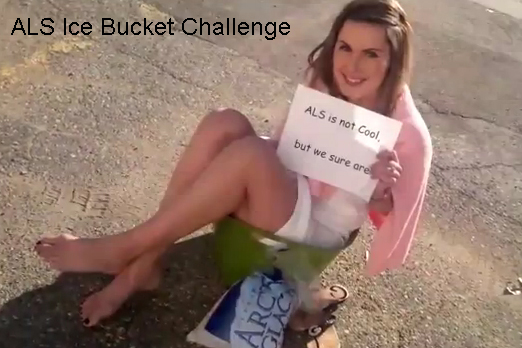ALS
Research
ALS is a fatal disease where the brain can no longer signal the muscles because the microscopic living wires (cells called motor neurons) that connect them malfunction and die. This leads to a progressive paralysis where the individual loses the ability to move, speak, swallow and eventually breathe. To this day, we have no effective treatments, but there is tremendous hope in the research community that we are on the right track.

There is no better time in ALS research history for the ice bucket challenge to have captured the attention and generosity of Canadians. We are at a time of unprecedented momentum in our understanding of the disease and researchers have come further in the past half decade than in the previous century.
When Lou Gehrig was diagnosed with ALS in 1939 and passed away two years later, scientists began focusing on ways to treat the fatal disease. As technology was limited, from the 1940’s to the 1980’s, much of the work done was observational in nature.

By the 1980’s the possibility to identify genetic changes that could cause a hereditary (familial) disease became reality. Approximately 10% of ALS is familial and it has long been believed that identifying a gene that could cause ALS in one of these families, would give us a tool (the gene) to work with in the laboratory to make animal and cell models that mimic human disease, allowing us to both understand how it works and find new treatments. After years of work, the first genetic cause of ALS was discovered; a mutation (a tiny change) in superoxide dismutase 1 (SOD1) represented about 1/5 of the familial cases. This also meant there were many other genes to be discovered causing the other 80% of familial disease.
Scientists around the globe worked for the next 13 years trying to understand how SOD1 caused ALS, but it was like trying to solve a very complex puzzle with one puzzle piece. A lot was learned, but we needed more pieces if we were going to solve the puzzle. In the past 5-7 years, the massive acceleration in technology for identifying gene mutations has now provided most of the other genes that cause familial ALS, including three prominent ones that are responsible for significant portions of the families worldwide. In 2014, researchers were actively producing new models of the disease and working to understand how all of these new puzzle pieces fit together and looking for mechanisms they have in common that might serve as targets for new therapies. Various therapies and methods have continued to evolve since then. In addition, other breakthroughs have come in identifying other cells (besides motor neurons) that actively contribute to the disease, discovering new ways to study the disease using models like worms and fish, and even being able to replicate human motor neurons in the lab using samples from people’s skin.

This means that you have many of the world’s best researchers believing we have a genuine shot at understanding ALS at the laboratory level in the foreseeable future and that it is only a matter of time before this leads to a new generation of therapeutics being tested in the clinic for slowing down the progression of ALS and providing a better quality of life for a longer period of time. As we work to coordinate therapies with earlier diagnoses, perhaps someday we can create a world without ALS. All of this leads back to the generosity of donors and sponsors. The key piece to accelerating ALS research is not the lack of ideas, but the resources required to execute all of the work that researchers are anxious to do. In a whole new world of increased awareness and funding, Canadians can be proud that their donations are going towards something that undoubtedly makes a difference.
David Taylor, PhD
Director of Research
ALS Society of Canada
